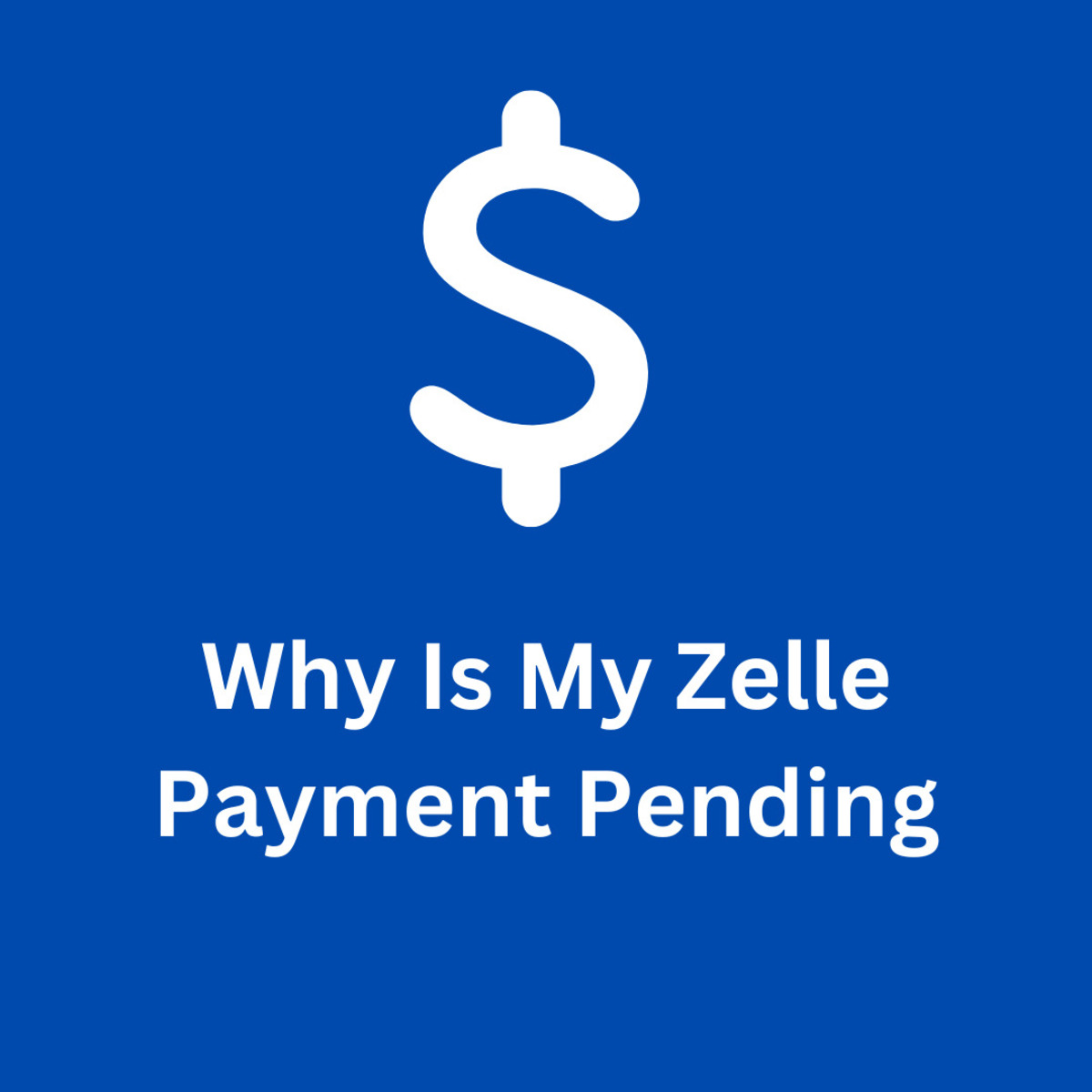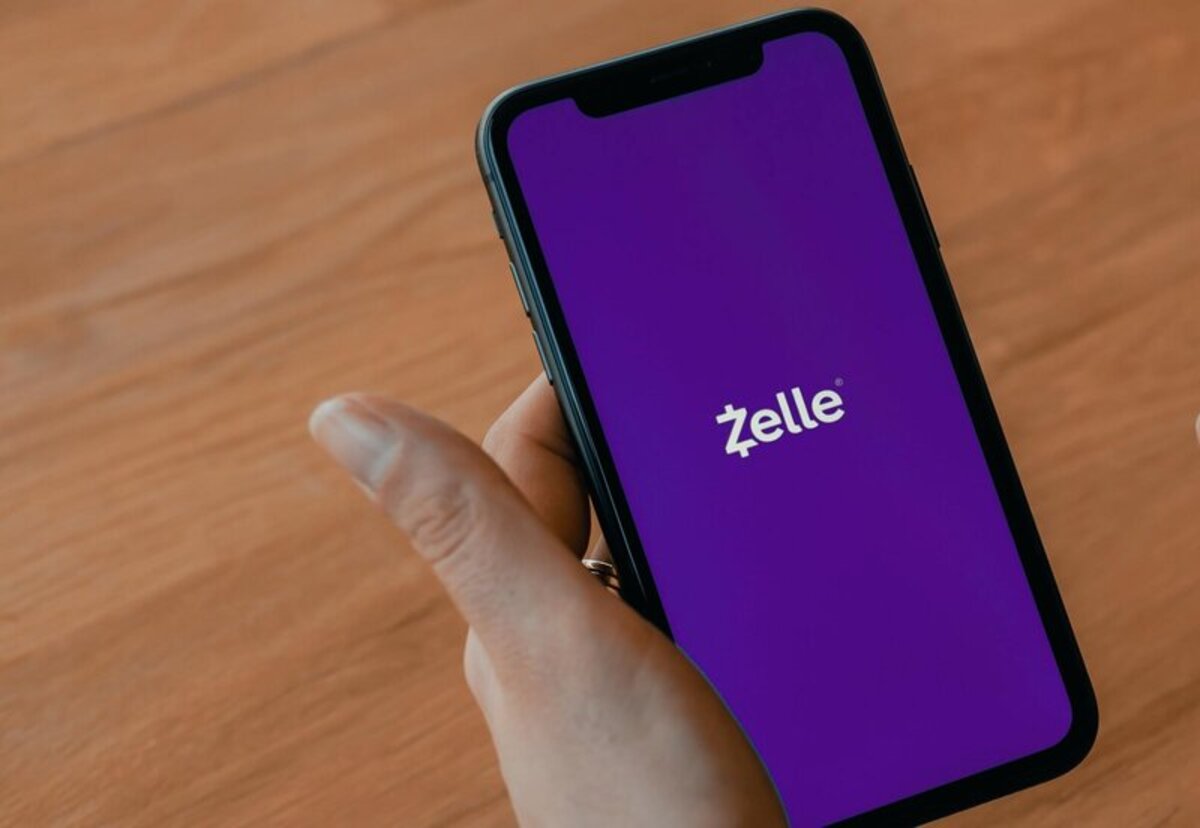Introduction
Welcome to the world of digital payments, where transactions can be made with just a few taps on your mobile device. One popular payment platform that has gained significant popularity is Zelle. With its quick and convenient transfer capabilities, Zelle allows users to send and receive money with ease.
However, while Zelle payments are typically instant, there may be instances when a payment is marked as pending. This can cause confusion and raise concerns for users who expect their transactions to go through seamlessly. In this article, we will explore the various reasons why a Zelle payment may be pending and provide insights on how to resolve the issue.
Understanding why a Zelle payment may be pending is crucial for users, as it allows them to know what to expect and take the necessary steps to resolve the situation. Whether it’s due to technical issues, verification processes, or other factors, knowing the cause can alleviate frustration and help users navigate through the payment process more effectively.
Understanding Zelle Payments
Zelle is a digital payment service that allows users to send and receive money from their bank accounts. It operates through a network of participating banks and credit unions, making it a convenient option for transferring funds between individuals.
One of the main advantages of using Zelle is its speed. Typically, Zelle payments are processed instantly, allowing for quick and easy transactions. This makes it ideal for situations where time is of the essence, such as splitting a bill at a restaurant or reimbursing a friend for concert tickets.
Another key feature of Zelle is its wide availability. Many major banks and financial institutions have partnered with Zelle, allowing their customers to access the service directly from their banking apps or websites. This eliminates the need for additional sign-ups or downloads, making it seamless and hassle-free to use.
When using Zelle, it’s important to note that both the sender and receiver need to have a bank account with a participating institution. This ensures that the transaction can be routed through the respective financial institutions’ systems and that the funds are directly transferred between the accounts.
Additionally, Zelle offers a certain level of security. As it operates within the existing banking infrastructure, it benefits from the same security measures and protocols that banks have in place. This includes encryption and fraud detection systems to safeguard users’ financial information and protect against unauthorized transactions.
Overall, Zelle provides a convenient and efficient way to send and receive money digitally. Its speed, wide availability, and secure infrastructure have made it a popular choice among individuals and businesses alike.
Reasons for a Zelle Payment Pending
While Zelle is generally known for its fast and seamless payment processing, there are instances when a payment may be marked as pending. Understanding the reasons behind a Zelle payment pending is crucial in order to address the issue effectively. Here are some common reasons why a Zelle payment may be pending:
- Insufficient Funds: One of the most common reasons for a Zelle payment to be pending is insufficient funds in the sender’s account. If the sender does not have enough funds to cover the transaction, the payment will not go through immediately and will be marked as pending until the funds become available.
- Daily and Monthly Limits: Zelle imposes certain limits on the amount of money that can be sent within a specific timeframe. These limits vary depending on the bank or credit union you are using. If you have reached your daily or monthly limit, any additional payments will be marked as pending until the limit resets.
- Payment Verification: In some cases, Zelle may need to verify the payment details before processing it. This can happen if the payment seems suspicious or if additional information is required. During the verification process, the payment will be marked as pending until it is reviewed and approved.
- Bank Verification: Another reason for a Zelle payment to be pending is when the recipient’s bank needs to verify their account details. This can occur if the recipient is using Zelle for the first time or if there is a need to update their account information. Once the verification process is complete, the payment will be processed and the pending status will be removed.
- Technical Issues: Occasionally, technical issues can arise on the Zelle platform or within the participating banks’ systems, causing payments to be delayed or flagged as pending. These issues are usually temporary and are resolved as soon as the system is back to normal.
It’s important to note that while these are common reasons for a Zelle payment to be pending, there may be other factors at play as well. If you find yourself in a situation where your payment is marked as pending, it’s best to consult with your bank or Zelle’s customer support for further assistance in resolving the issue.
Insufficient Funds
One of the most common reasons for a Zelle payment to be pending is when the sender’s account has insufficient funds to cover the transaction. When you initiate a payment through Zelle, the system immediately checks if you have enough money in your account to complete the transfer.
If there are not enough funds available, the payment will be marked as pending until you deposit sufficient funds into your account. It’s important to note that each bank sets its own policies regarding insufficient funds, so the length of time a payment remains pending can vary.
Once you have deposited enough funds into your account, the payment will be processed and the pending status will be removed. It’s a good practice to regularly monitor your account balance and ensure that there are sufficient funds available before initiating a Zelle payment to avoid any delays or pending statuses.
Zelle provides a convenient way to send and receive money, but it’s essential to remember that the system relies on the availability of funds in your bank account. By being mindful of your account balance, you can avoid the inconvenience of having payments marked as pending due to insufficient funds.
Daily and Monthly Limits
Zelle imposes certain limits on the amount of money that can be sent within a specific timeframe. These limits are set by the participating bank or credit union and can vary from institution to institution. It’s important to be aware of these limits, as exceeding them can result in your payment being marked as pending.
The daily limit refers to the maximum amount of money that you can send through Zelle in a single day. This limit is typically set to prevent unauthorized or fraudulent transactions. Once you reach your daily limit, any additional payments will be marked as pending until the limit resets.
In addition to the daily limit, there is also a monthly limit that restricts the total amount of money you can send through Zelle within a calendar month. This limit provides an additional layer of security and helps prevent excessive or unauthorized transfers. Similar to the daily limit, if you exceed the monthly limit, any subsequent payments will be marked as pending until the new month begins.
To find out your specific daily and monthly limits, you can check with your bank or credit union. Most financial institutions provide this information on their websites or through their customer support channels. It’s important to note that these limits can vary depending on your account type and any additional services you may have with your bank.
To avoid having payments marked as pending due to exceeding the daily or monthly limits, it’s important to keep track of your transaction history and monitor your usage. If you anticipate making large transfers, you may need to plan accordingly and spread out your payments over multiple days or within different months to stay within the allowed limits.
Understanding the daily and monthly limits set by your bank or credit union ensures that your Zelle payments are processed smoothly and without any pending status. By staying within these limits, you can enjoy the convenience of quick and hassle-free transactions through Zelle.
Payment Verification
Payment verification is an important step in the Zelle payment process, aimed at ensuring the security and legitimacy of transactions. In some cases, Zelle may need to verify certain payment details before processing the transfer, which can result in the payment being marked as pending.
There are several reasons why a payment may require verification. One common scenario is when the payment is flagged as potentially suspicious. Zelle employs advanced fraud detection systems to identify and prevent unauthorized transactions. If a payment triggers a potential red flag, it will be subjected to additional scrutiny and verification before it can proceed.
Another reason for payment verification is when there is a need for additional information. For example, certain transactions may require specific details, such as an invoice number or reference information, to ensure accuracy. In such cases, Zelle may reach out to the sender or recipient to request the necessary information for verification purposes.
Payment verification ensures that funds are transferred securely and that both the sender and recipient have provided the relevant information to complete the transaction. While the verification process may introduce a brief delay, it plays a vital role in safeguarding against fraudulent activities and protecting users’ financial interests.
During the verification period, the payment will remain pending. Once the review and verification process is complete, Zelle will either approve the payment and process it or notify the sender or recipient of any issues that need to be resolved before the payment can proceed.
If you encounter a pending payment due to verification, it’s important to respond promptly to any communication from Zelle or your bank. Make sure to provide any requested information accurately and promptly to expedite the verification process. The sooner the verification is completed, the sooner the pending payment status will be resolved.
By understanding and cooperating with the payment verification process, you can ensure the smooth and secure processing of your Zelle payments. While it may introduce a temporary delay, payment verification is a necessary step to protect against fraudulent activities and maintain the integrity of the payment platform.
Bank Verification
Another common reason for a Zelle payment to be pending is when the recipient’s bank needs to verify their account details. This verification process is typically required when the recipient is either new to using Zelle or when there is a need to update their account information.
When a payment is made through Zelle, the recipient’s bank plays a crucial role in processing and transferring the funds. To ensure the accuracy and security of the transaction, some banks require additional verification steps before allowing the funds to be credited to the recipient’s account.
During the bank verification process, the payment will be marked as pending until the recipient’s bank reviews and confirms the account details. This verification step helps to prevent any potential errors or unauthorized transfers from occurring.
The bank verification process can involve various steps, such as confirming the account holder’s identity, checking for any restrictions or holds on the account, and verifying that the account is active and in good standing. The length of time it takes for the verification process can vary depending on the recipient’s bank’s internal procedures and workload.
If you are the sender of a payment and it is marked as pending due to bank verification, there is usually no action required on your part. The recipient’s bank will reach out to them directly if any additional information or documentation is needed. Once the verification is successfully completed, the payment will be processed, and the pending status will be removed.
It’s important for recipients to respond promptly to any communication from their bank regarding the verification process. Providing accurate and timely information can help expedite the verification and ensure that the payment is processed without any further delays.
If you are the recipient of a pending payment due to bank verification, it can be helpful to reach out to your bank directly for clarification and updates. They will be able to provide you with the necessary information and guide you through the verification process.
Understanding the bank verification process is essential in resolving pending Zelle payments. By cooperating with your bank and providing the requested information, you can facilitate the verification process and ensure the smooth processing of your Zelle transactions.
Technical Issues
While Zelle strives to provide a seamless and efficient payment experience, technical issues can occasionally arise, causing payments to be delayed or marked as pending. These issues can stem from various factors, such as system maintenance, connectivity problems, or glitches within the Zelle platform or participating banks’ systems.
When technical issues occur, payments may be temporarily held in a pending status until the underlying problem is resolved. This prevents potential errors or discrepancies from affecting the accuracy and security of the transaction.
If you encounter a pending payment due to technical issues, it’s important to be patient and allow the systems to rectify the problem. In most cases, payments will automatically be processed once the technical issue is resolved, and the pending status will be lifted.
If the pending status persists for an extended period or if you have concerns about the status of your payment, it’s recommended to reach out to your bank or Zelle’s customer support. They can provide you with updates on the situation and help you navigate through any technical difficulties.
It’s important to note that technical issues are generally resolved within a reasonable timeframe, and the majority of Zelle transactions are processed smoothly. However, in rare cases, more complex technical issues may require additional investigation and manual intervention, which can result in longer waiting times for the pending status to be resolved.
To minimize the likelihood of encountering technical issues with your Zelle payments, it’s advisable to keep your banking apps and devices up to date. Regularly checking for updates and installing patches can help ensure that you are running the latest version of the Zelle application, reducing the risk of compatibility issues.
While technical issues can be frustrating, it’s important to remember that they are typically beyond your control as a user. By staying informed and reaching out for assistance when needed, you can navigate through any pending payment situations caused by technical issues with confidence.
Resolving a Zelle Payment Pending
Experiencing a Zelle payment marked as pending can be frustrating, especially when you expect the transaction to be processed smoothly. However, there are steps you can take to resolve the pending status and ensure your payment goes through. Here are some tips to help you navigate through a pending Zelle payment:
- Contacting Customer Support: If you have a pending payment and are unsure about the reason, contacting your bank or Zelle’s customer support can provide you with valuable insights. They can help identify the specific cause of the pending status and guide you on the appropriate actions to resolve the issue.
- Waiting for the Payment to Clear: In some cases, a pending status may be temporary and resolve on its own. This can happen when there are system delays or technical issues. Patience is key in these situations, and it is recommended to allow some time for the payment to clear. Often, payments will go through once the underlying issue is resolved, and the pending status will be removed.
- Verifying Bank Account Information: If the pending status is due to bank verification, ensure that your account information is accurate and up to date. Respond promptly to any requests for further information or documentation from your bank or Zelle. By providing the necessary verification details, you can expedite the process and alleviate the pending status.
- Resolving Insufficient Funds: If the pending status is due to insufficient funds in your account, deposit enough money to cover the transaction. Once your account has sufficient funds, the payment will be processed, and the pending status will be removed. It’s important to monitor your account balance and ensure you have enough funds available before initiating a Zelle payment.
- Double-Checking Daily and Monthly Limits: If your pending payment is due to exceeding the daily or monthly limit, check with your bank to determine the specific limits for your account. Avoid surpassing these limits by spreading out your payments over multiple days or within different months. By staying within the prescribed limits, you can prevent payments from being marked as pending.
It’s important to note that the specific steps to resolve a pending Zelle payment may vary depending on the underlying cause. If none of these suggestions resolve the pending status, it is advisable to seek assistance from your bank or Zelle’s customer support for further guidance.
Remember, while pending payments can be inconvenient, by following the appropriate steps and staying in communication with the necessary parties, you can successfully resolve issues and ensure your Zelle payments are processed smoothly.
Contacting Customer Support
If you find yourself with a pending Zelle payment and are unsure about the reason or how to resolve it, reaching out to customer support can provide you with valuable guidance. Customer support is there to assist users in navigating any issues or concerns related to Zelle payments.
Contacting customer support can be done through various channels, depending on your bank or Zelle’s support options. Here are some recommended steps to follow when reaching out to customer support:
- Check the Bank or Zelle Website: Start by visiting the official website of your bank or Zelle. They often have dedicated support sections where you can find answers to common questions or access information on how to contact customer support. Look for FAQs, help centers, or support pages that address Zelle payment-related issues.
- Utilize Online Chat or Messaging: Many banks and Zelle offer online chat services, where you can have a direct conversation with a customer support representative. Utilize this option to explain your issue and seek guidance on resolving the pending status. Provide them with the necessary details, such as your transaction information or error messages, to help them understand the situation better.
- Call Customer Support: If online chat or messaging is not available, contact the customer support phone number provided by your bank or Zelle. Explain your situation to the representative and follow their instructions on how to resolve the pending payment. Be ready to provide any relevant information, such as your account details, transaction IDs, or any error messages you may have received.
- Be Patient and Persistent: Resolving a pending Zelle payment may require some time and effort. Customer support representatives are there to assist you but keep in mind that they may need to investigate the issue or consult with other departments. Stay patient and follow their instructions diligently. If your issue is not resolved after the initial contact, don’t hesitate to reach out again for further assistance or escalation if needed.
Remember, customer support is there to help you with any Zelle payment issues you may encounter. They have the knowledge and expertise to guide you through the necessary steps to resolve pending payments. By proactively reaching out for assistance, you can increase the chances of a timely and successful resolution to your pending Zelle payment.
Waiting for the Payment to Clear
Encountering a pending Zelle payment can be a frustrating experience, but in some cases, it may be best to exercise patience and wait for the payment to clear. There are several reasons why a payment may be marked as pending, and sometimes the issue can resolve itself over time without any intervention required.
When a payment is pending, it means that it is currently being processed or awaiting further verification. This can happen due to various factors, such as technical issues, verification procedures, or other internal processes within Zelle or the participating banks.
While waiting for a payment to clear, it’s important to keep an eye on the status and be patient. In most cases, pending payments will resolve themselves as the underlying issues are addressed or the necessary verification steps are completed.
It’s worth noting that the duration of a pending status can vary. Some payments may clear within a few hours, while others may take a couple of days. This timeline depends on the specific circumstances surrounding the pending payment, such as the nature of the verification process or the complexity of the issue causing the delay.
If you have concerns about the length of time it is taking for your payment to clear, you can consider reaching out to customer support for further clarification. They can provide insights into the status of your payment and help determine if any additional action on your part is required.
While waiting for a payment to clear can be frustrating, it’s often the most practical course of action. Attempting to cancel or initiate a new payment during this time can complicate matters further and potentially lead to additional delays.
By allowing the payment to go through the normal processing channels and giving it sufficient time, you increase the likelihood of a successful resolution. If the pending status persists for an abnormally long period or you do not receive any updates, contacting customer support may be necessary to seek further guidance or intervention.
Remember, patience is key when waiting for a Zelle payment to clear. By giving the system time to process the payment, you increase the chances of a successful resolution and ensure a smooth experience with your digital transactions.
Conclusion
Zelle offers users a convenient and efficient way to send and receive money digitally. While the platform aims to provide seamless transactions, there may be instances when a payment is marked as pending. Understanding the reasons behind a pending Zelle payment and knowing how to effectively resolve the issue is essential for a smooth payment experience.
In this article, we have explored the various reasons why a Zelle payment may be pending. These reasons include insufficient funds, daily and monthly limits, payment verification, bank verification, and technical issues. By understanding these factors, users can better navigate through the payment process and take appropriate steps to address the pending status.
We have also provided guidance on how to resolve a pending Zelle payment. This includes contacting customer support, waiting for the payment to clear, verifying bank account information, and addressing issues such as insufficient funds or limit restrictions. Taking these steps can help users successfully resolve pending payments and ensure the smooth processing of their transactions.
It’s important to remember that Zelle is constantly working to improve its platform and address any issues that may arise. However, occasional pending payments may still occur due to various factors. By staying informed, being patient, and utilizing the resources available, users can navigate through these situations and enjoy the benefits of digital payments with Zelle.
If you encounter a pending Zelle payment, we recommend contacting your bank or Zelle’s customer support for guidance. They have the knowledge and expertise to provide you with personalized assistance and help resolve the pending status.
With the right approach and understanding, you can overcome any challenges related to pending Zelle payments and enjoy the convenience and efficiency of digital transactions.

























